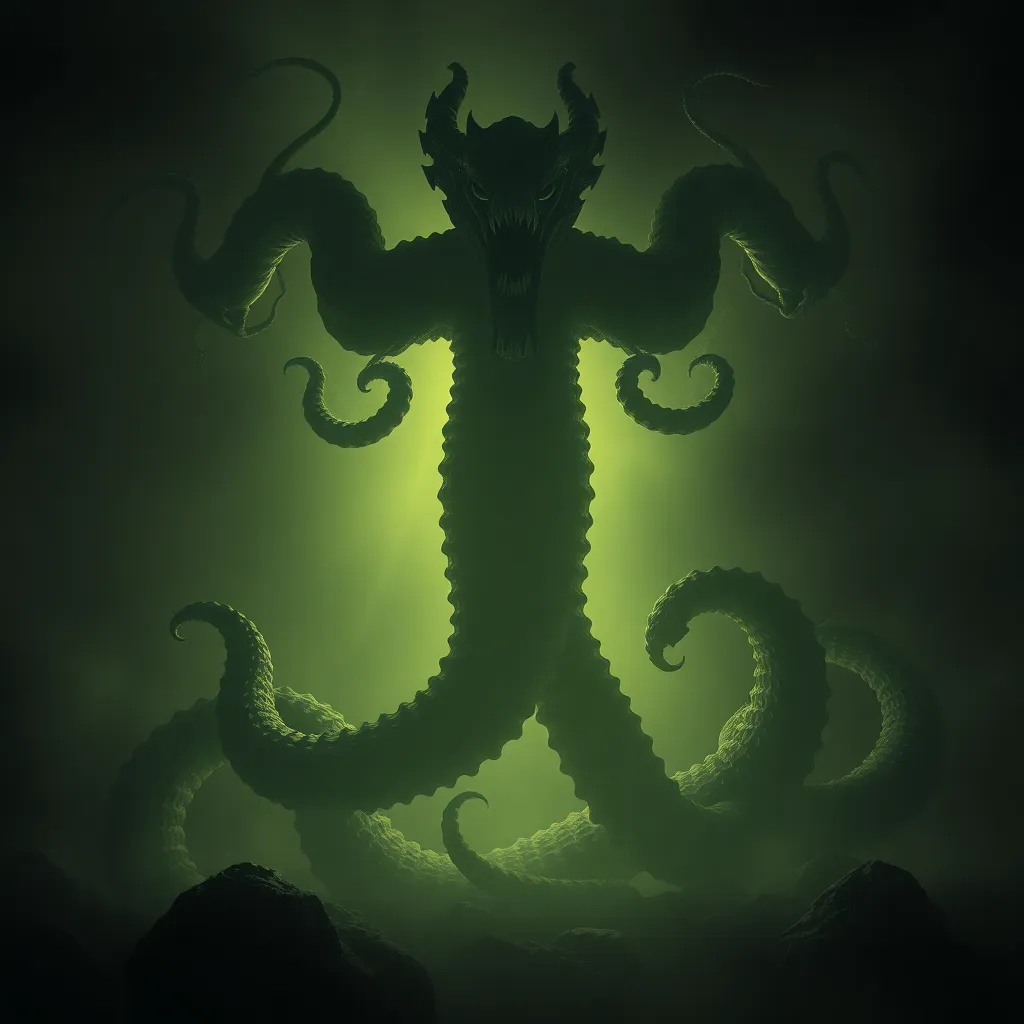Baltic Mythology: Guardians of the Earth
The Baltic region, a land of rolling hills, lush forests, and sparkling waters, holds a rich tapestry of myths and legends that have been passed down through generations. These stories, brimming with tales of gods, goddesses, and spirits, offer a unique perspective on humanity's relationship with the natural world. At their core lies a deep respect for nature, a reverence for the earth, and a recognition of the interconnectedness of all living things. This ancient wisdom, embedded in these powerful stories, holds valuable insights for modern environmental challenges and offers a unique lens through which to view sustainability.
Earth Mother and Divine Harmony: Understanding the Baltic Creation Myth
The Baltic creation myth speaks of a primordial being, Žemyna, the Earth Mother, who emerges from the cosmic egg and gives birth to the land. This powerful deity embodies the nurturing and life-giving power of the earth, highlighting its fundamental role in sustaining all life. The creation myth emphasizes a harmonious relationship between humans and nature, portraying the earth as a sacred space that must be protected and revered. This vision of a divine connection to the earth fosters a sense of responsibility for its well-being.
The Sacred Grove: Reverence for Nature in Baltic Mythology
The Baltic people held forests in high esteem, viewing them as sacred spaces teeming with spirits and divine beings. The sacred groves, often adorned with ancient trees and dotted with altars, served as places of worship and pilgrimage. These groves represented a bridge between the human world and the realm of the divine. In these revered spaces, ancient oaks and other trees held spiritual significance, embodying the cycle of life, growth, and renewal. The preservation of these groves underscores the respect for nature's sanctity and its essential role in maintaining ecological balance.
Water Spirits and the Flow of Life: Understanding the Importance of Water in Baltic Mythology
Water, the lifeblood of the Baltic region, plays a central role in the mythology. From the shimmering lakes to the powerful rivers, these waterways were seen as sacred, teeming with spirits and deities. Water nymphs, known as "Undines," protected the purity of the waters and ensured their abundance. The Baltic people recognized the vital role of water in sustaining life and the interconnectedness between the rivers, lakes, and the well-being of the land. This deep appreciation for the importance of water echoes in many ancient Baltic myths, serving as a potent reminder of its preciousness.
The Animal Realm: Respect and Interconnectedness in Baltic Folklore
The animal kingdom holds a significant place in Baltic mythology. Animals are not just seen as creatures to be exploited but as fellow inhabitants of the earth, each with its own unique role and purpose. Animals like wolves, bears, and birds, are often depicted as possessing supernatural abilities and wisdom. These stories highlight the interconnectedness between humans and animals, emphasizing the need for respect and co-existence. The stories serve as powerful reminders of the delicate balance of the ecosystem and the importance of preserving biodiversity.
The Forest and its Inhabitants: Exploring the Role of Trees and Animals
Baltic mythology places a strong emphasis on the importance of the forest, recognizing it as a vital part of the ecosystem and a place of spiritual significance. Trees are revered as guardians of ancient wisdom, often serving as powerful symbols in the myths. The oak, with its strength and longevity, is seen as a symbol of the divine and is often associated with thunder god, Perkūnas. The birch, with its delicate beauty and grace, represents the feminine principle and is connected to the goddess of love and fertility, Laima. These trees are not simply plants but living beings, imbued with a sacred aura.
The animal kingdom is portrayed as being intricately woven into the fabric of life in the forest. Animals, like the wolf, bear, and elk, play a vital role in the stories, often representing specific qualities and embodying the balance of nature. The wolf, for example, symbolizes strength, loyalty, and the wildness of nature. The bear, known for its power and wisdom, is often portrayed as a guardian spirit. These animals are not simply objects of fear or exploitation but are respected for their role in maintaining the ecological harmony of the forest.
The Mythological Consequences of Environmental Harm: Learning from the Stories
Baltic mythology is full of stories that highlight the importance of respecting the environment and the potential consequences of neglecting it. For example, the story of the sorcerer, Velnias, who, driven by greed, destroys the forest and disrupts the balance of nature, is a cautionary tale. The forest, once a sanctuary for animals and spirits, becomes barren and lifeless, symbolizing the devastating impact of human greed on the natural world.
Other stories depict the anger of nature when it is mistreated. The legend of the "Ragana" (witch), a powerful spirit who controls the elements, serves as a reminder that nature will exact revenge if it is abused. These myths, woven with powerful imagery and symbolism, serve as potent warnings about the consequences of neglecting the environment.
The Power of Storytelling: Connecting with Nature through Baltic Myths
The art of storytelling has long been a vital aspect of Baltic culture. Through these ancient tales, knowledge about the natural world was passed down through generations. These stories not only entertained but also served as practical guides for understanding the land, its resources, and the delicate balance of the ecosystem.
The mythological narratives instilled a deep respect for nature and promoted sustainable practices. For instance, the story of the "Ūdensmeita" (water nymph), who protects the sources of water, reinforces the responsibility for preserving the purity of lakes and rivers. These stories serve as powerful reminders of the importance of protecting the natural world, a legacy of ancient wisdom that resonates with modern environmental challenges.
Environmental Conservation in the Baltic Region: A Legacy of Myth
The reverence for nature deeply embedded in Baltic mythology has left a lasting impact on the region’s environmental consciousness. The Baltic people have long recognized the importance of preserving forests, protecting water resources, and respecting the delicate balance of the ecosystem. These traditions and practices have fostered a strong sense of stewardship for the land, contributing to a unique environmental ethos in the region.
Modern Interpretations of Baltic Mythology: Applying Ancient Wisdom to Contemporary Challenges
As the world faces growing environmental challenges, Baltic mythology offers a timeless lens through which to view sustainability. The ancient stories serve as powerful reminders of the interconnectedness of all living things and the importance of respecting the Earth. Their themes of reverence for nature, responsible stewardship, and the consequences of environmental neglect are particularly relevant in today's world.
By re-examining these myths, we can draw valuable insights into the wisdom of our ancestors and apply them to modern challenges. Reviving these stories can help create a deeper connection with the natural world, foster a sense of responsibility for its well-being, and inspire new approaches to environmental conservation.
FAQs
Q: What are the key themes that emerge from Baltic mythology related to the environment?
- A: The key themes include the reverence for nature, the interconnectedness of all living things, the importance of respecting the environment, and the consequences of environmental harm.
Q: How can understanding Baltic mythology contribute to modern environmental efforts?
- A: By understanding the ancient perspective on the environment, we can gain valuable insights into the wisdom of our ancestors and apply it to contemporary environmental challenges. It can inspire a deeper connection with the natural world and foster a sense of responsibility for its well-being.
Q: What are some specific examples of how Baltic myths promote environmental conservation?
- A: The stories of the "Ūdensmeita" (water nymph), who protects the sources of water, and the "Ragana" (witch), who controls the elements, serve as powerful reminders of the importance of preserving the purity of water and respecting the forces of nature. The myth of the sorcerer, Velnias, who destroys the forest, highlights the consequences of neglecting the environment.
Q: How can we use Baltic mythology to educate future generations about environmental protection?
- A: Baltic mythology can be woven into educational programs and storytelling initiatives to engage young people with the importance of protecting nature. These stories can spark imagination, inspire curiosity, and create a sense of responsibility for the environment.



